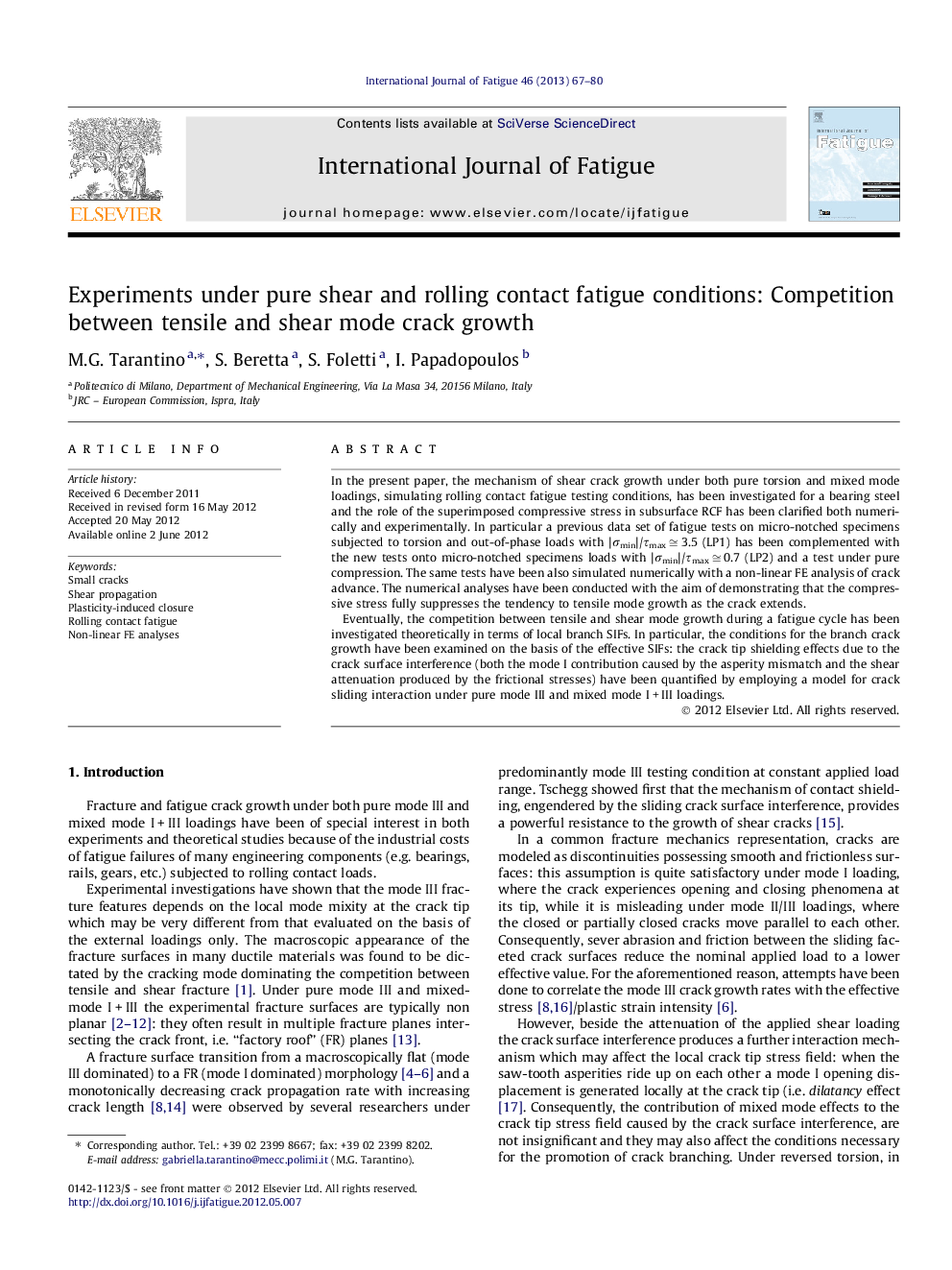| Article ID | Journal | Published Year | Pages | File Type |
|---|---|---|---|---|
| 775367 | International Journal of Fatigue | 2013 | 14 Pages |
In the present paper, the mechanism of shear crack growth under both pure torsion and mixed mode loadings, simulating rolling contact fatigue testing conditions, has been investigated for a bearing steel and the role of the superimposed compressive stress in subsurface RCF has been clarified both numerically and experimentally. In particular a previous data set of fatigue tests on micro-notched specimens subjected to torsion and out-of-phase loads with |σmin|/τmax ≅ 3.5 (LP1) has been complemented with the new tests onto micro-notched specimens loads with |σmin|/τmax ≅ 0.7 (LP2) and a test under pure compression. The same tests have been also simulated numerically with a non-linear FE analysis of crack advance. The numerical analyses have been conducted with the aim of demonstrating that the compressive stress fully suppresses the tendency to tensile mode growth as the crack extends.Eventually, the competition between tensile and shear mode growth during a fatigue cycle has been investigated theoretically in terms of local branch SIFs. In particular, the conditions for the branch crack growth have been examined on the basis of the effective SIFs: the crack tip shielding effects due to the crack surface interference (both the mode I contribution caused by the asperity mismatch and the shear attenuation produced by the frictional stresses) have been quantified by employing a model for crack sliding interaction under pure mode III and mixed mode I + III loadings.
► The mechanism of shear crack growth under subsurface RCF has been investigated. ► The role of the compressive stress in subsurface RCF has been clarified. ► The competition between tensile and shear mode growth has been investigated.
